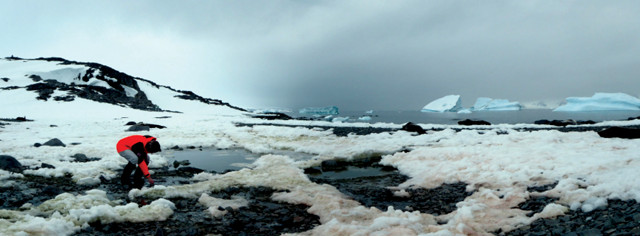
by Mary Caperton Morton Monday, March 19, 2018

University of Tübingen geoscientist Julia Kleinteich collects water samples in Antarctica. Credit: Daniel Farinotti.
The Arctic and Antarctica, separated by more than 15,000 kilometers, may be geographic opposites but they share many similarities, including their diverse arrays of bacteria and other microscopic life forms. A new study looking at the DNA of bacteria from both poles has found remarkable similarities between the two regions’ bacterial diversity, including some of the same species.
How populations of the same species came to inhabit both poles is not yet clear, but they could be carried by migrating birds, by ships that travel between the poles, or on wind or water droplets in the atmosphere. Many of the microorganisms sampled also overlap with those found in more temperate regions, so the bacteria may simply be generalists that can survive under a wide spectrum of conditions, the team, led by Julia Kleinteich of the University of Tübingen and Falk Hildebrand of the European Molecular Biology Laboratory in Heidelberg, Germany, wrote in Frontiers in Ecology and Evolution.
© 2008-2021. All rights reserved. Any copying, redistribution or retransmission of any of the contents of this service without the expressed written permission of the American Geosciences Institute is expressly prohibited. Click here for all copyright requests.